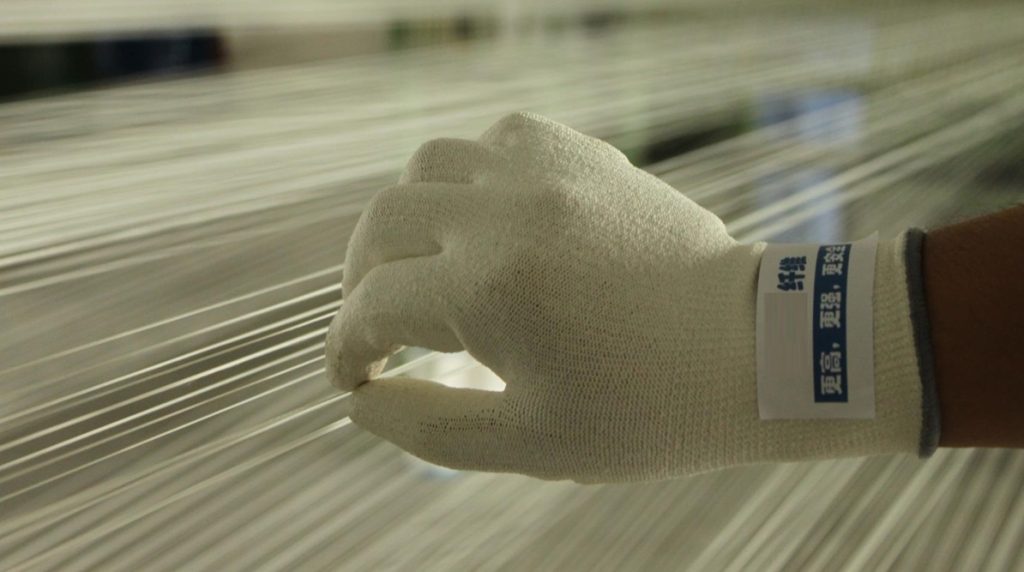Due to the excellent mechanical properties, wear resistance, low temperature resistance, UV resistance, and corrosion resistance of UHMWPE fibers, ultra-high molecular weight polyethylene fibers (hereinafter referred to as “UHMWPE fibers”) are popular in fields such as aerospace, military protection, marine engineering, and textiles, becoming a strategic new material that countries around the world are competing to develop.
However, the development path of UHMWPE fibers in China is not smooth. As a dual-use new material, Chinese UHMWPE fibers have been restricted by foreign countries for many years, until the 1980s when research on UHMWPE fibers began in China.
Professor Wang Yimin from Donghua University in Shanghai told Hay Think that in 1984, Donghua University established a research group on gel spinning, gradually conquering polyethylene gel spinning technology, accumulating rich data from small-scale and pilot tests, and developing technology processes with independent intellectual property rights, laying a solid foundation for subsequent industrialization.
In 1998, JSSH Fiber Technology began researching and developing complete sets of UHMWPE fiber production equipment and engineering technology. In 2005, it collaborated with Shanghai Donghua University to establish the “Engineering Technology Research Institute” to jointly develop large capacity complete sets of technology and equipment.
The annual production technology and complete equipment of 300 tons of heat-resistant and creep resistant UHMWPE fibers jointly developed by JSSH and Donghua University passed the scientific and technological achievement appraisal organized by the China Textile Industry Federation in June 2018, and the overall technology has reached the international advanced level.
Breakthrough progress in the industrialization of UHMWPE fibers in China
At present, there are more than 20 core UHMWPE fiber enterprises in China, including JSJZ, BJTY, JSYH, ZJQX, HNZT, NBDC, JSSH… with a total production capacity of about 41000 tons, which has exceeded the total production capacity of foreign countries,the product quality and technology also have strong market competitiveness.
 |
Between 2005 and 2022, China’s UHMWPE fiber production capacity increased from around 2000 tons to approximately 42000 tons, with an average annual growth rate of 19.6%; The production increased from over 800 tons to 31000 tons, with an average annual growth rate of 24.0%;
The proportion of China’s total UHMWPE fiber production capacity in global production capacity has increased from 8% in 2005 to over 67% in 2022. Overall, China’s UHMWPE fiber production and quality level have ranked among the top in the world.
As the industrial scale continues to climb, the technological equipment of UHMWPE fibers in China is also constantly improving. The UHMWPE fiber industry in China has developed wet spinning and dry spinning technologies with independent intellectual property rights, and the technical system is gradually improving, further improving production efficiency.
The differentiation and functionalization technology of UHMWPE fibers in China has been further improved, and new products such as high strength, fine denier, heat resistance, and creep resistance continue to meet the application needs of rope nets, gloves, bulletproof, and textiles. In particular, UHMWPE fiber specific resin technology has achieved new breakthroughs, significantly increasing production and quality, supporting the improvement of fiber quality stability and the development of high-grade products.
In terms of market applications, Chinese UHMWPE fibers are gradually becoming more diversified.
The main application areas of UHMWPE fibers in China are rope nets, gloves, bulletproof, and home textiles, with a total usage of over 80%.
In 2022, the production of UHMWPE fibers in China was approximately 31000 tons. In recent years, the market demand for bulletproof fibers has been strong, with a significant increase in demand for bulletproof grade fibers, with usage increasing by about three times. Additionally, fiber prices have continued to rise throughout the year.
In addition, UHMWPE fibers have also been applied in sports equipment such as hiking ropes, tennis racket cables, snowboards, as well as household textiles such as mattresses, cool mats, and duvet covers.
In terms of international trade, Chinese UHMWPE fibers have also shown strong advantages. Firstly, China imports around 100 tons of UHMWPE fibers from abroad annually, accounting for only 0.6% of the total domestic application volume, indicating that domestically produced UHMWPE fibers have occupied the vast majority of the Chinese market and have been widely recognized by downstream customers.
Secondly, from 2015 to 2022, China has exported a total of 26258.6 tons of UHMWPE fibers, with an average annual export volume accounting for nearly 20% of China’s production, indicating that domestically produced UHMWPE fibers have strong international competitiveness.
Several Chinese companies are developing efficient dissolution and creep resistant special resins for ultra-high molecular weight polyethylene fibers, with a focus on developing key preparation technologies and specialized equipment for ultra-high molecular weight polyethylene fibers with heat resistance, creep resistance, ultra-high strength (≥ 40cN/dtex), ultra-high modulus (≥ 1600cN/dtex), and high cutting resistance.
Strengthen the research and development efforts of differentiated products such as fine denier, high wear resistance, medium and low strength, and colored products. Developing environmentally friendly solvents and solvent recovery technologies without solid waste, as well as key low-cost production technologies and equipment for green environmental protection, significantly reducing production costs and expanding the application of products in civilian and marine industries.
Develop new modification technologies suitable for industrial production, improve fiber interface bonding performance, and enhance the mechanical properties of composite materials.

